One of the first concepts I learned about in portrait photography was “Lens Compression.” The common assumption is that a telephoto lens will “compress” the foreground and background together. This produces a more pleasing portrait that doesn’t distort facial features while still drawing attention to your subject (and not the background). In this post, I’ll get into more detail as to what lens compression truly is (and isn’t) and discuss how it applies to other genres of photography, like landscapes.
Let me first clarify that lens compression doesn’t technically exist. There is no magic in a lens that changes physics and compresses a scene. The “compression” is a byproduct of your working distance from the subject. You can take advantage of perspective compression using any lens.
Take a look at this image of the Maroon Bells. Can you guess which was taken with a wide-angle lens and which was taken with a telephoto lens? These two photographs look nearly identical even though I used two different lenses at drastically different focal lengths: 17mm versus 180mm. I simply cropped the wide-angle version to match that of the telephoto version. What makes these two images appear similar is my working distance from the mountain, not the focal length of my lens. I stood in the exact same position at Maroon Lake for each photo. Still don’t believe me? Download the telephoto version and the un-cropped wide angle version for yourself, then crop the wide-angle image like I did and compare the two. Better yet – attempt a similar test using your own equipment.
Now let’s try the opposite effect – capturing a scene with different working distances but with the same lens and angle to the subjects. In these toy train images, the top half was taken with a shorter working distance than the bottom half. Look how much closer the blue train in the foreground appears to the green train in the background when photographed from a longer working distance. If you understand the previous discussion, you’ll realize that it doesn’t matter if the two images were taken with the same lens and then cropped or if one was taken with a wide angle and the other with a telephoto lens.
This diagram shows my setup for the close working distance photograph. There was an equal distance between my camera and the blue train, represented by line “a,” and the blue and green train, represented by line “b.” There was about twice that amount of distance between the green train and the background, represented by line “c.”
This second diagram breaks down my setup for the longer working distance photograph. The distance between my camera and the blue train, represented by line “a,” is much greater than the distance between the two trains, represented by line “b.” My camera is also much further away from the trains than they are from the background. The key is that my camera changed positions but the trains did not, even though they appear closer to each other.
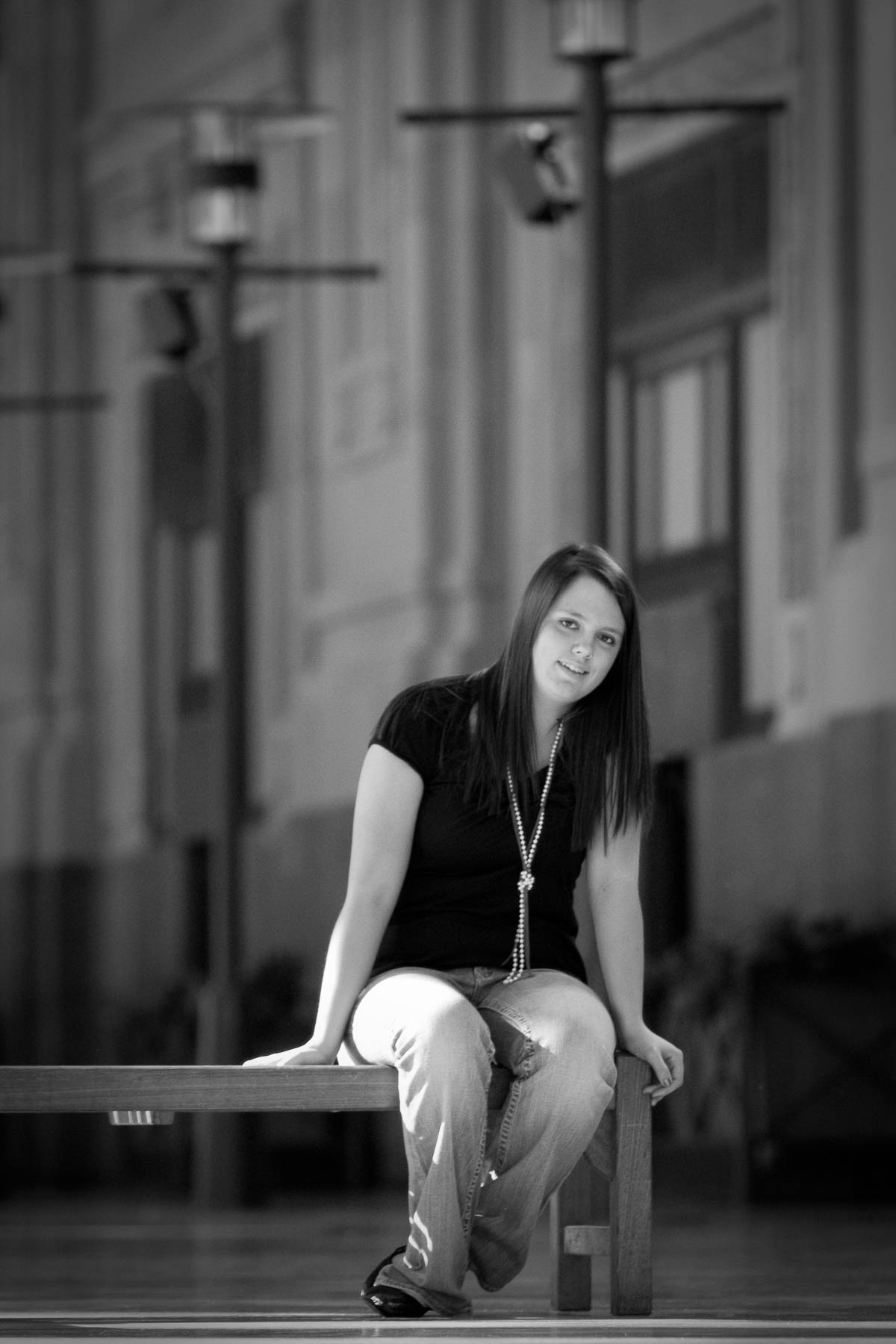
Both of these concepts are very important to portrait photography. In this example, the actual background was fairly busy and quite deep. But by stepping away from the subject, I was able to “compress” that background into something that is still recognizable as Union Station in Kansas City without being too distracting. While I could have technically used a wide-angle lens and cropped in, a telephoto was much faster and didn’t lose any pixels due to cropping.
How I apply this concept to my landscape photography depends on the desired effect.
With this image of the Nelson Art Museum in Kansas City, I got very close to the shuttlecock lawn art because I wanted its size to be distorted in relation to the museum.
As you can see with this image taken from a longer working distance, the shuttlecocks aren’t nearly as large as the first image would lead you to believe.
One other point I’ll mention is that these concepts apply equally to cameras of all sensor sizes. If you have a 1.6X crop sensor camera and stand next to someone with a 1.0X crop sensor camera, as long as your lens selection or post-processing image cropping allows you to frame the same scene, your perspective compression will be equal even though the full frame camera will be at a longer focal length.
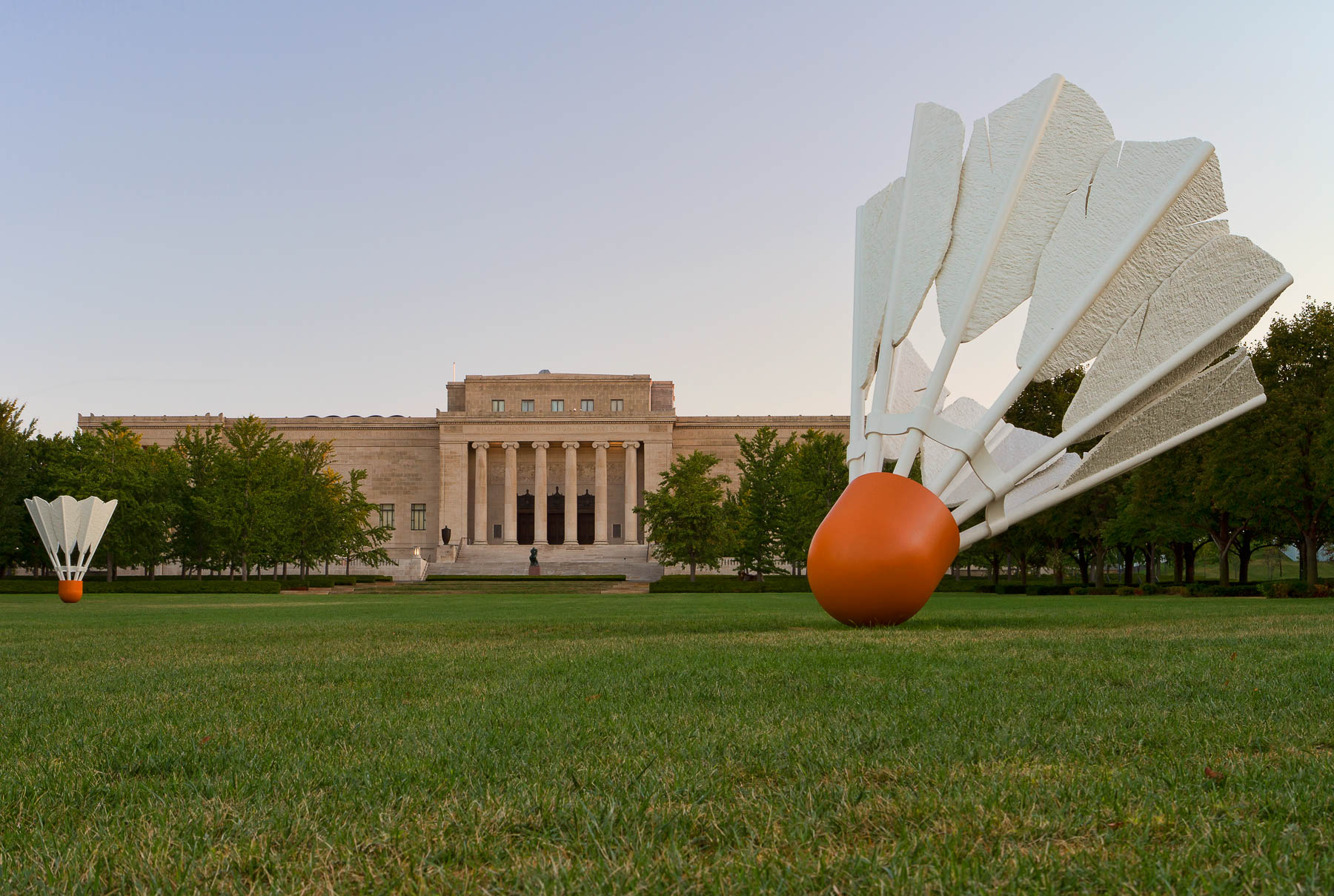
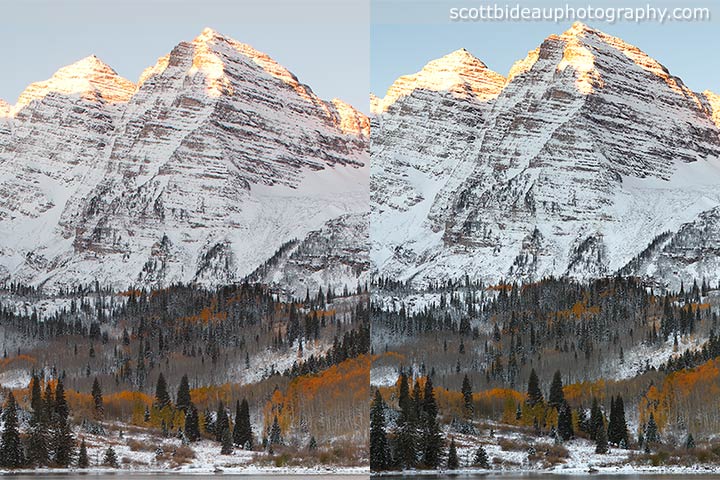
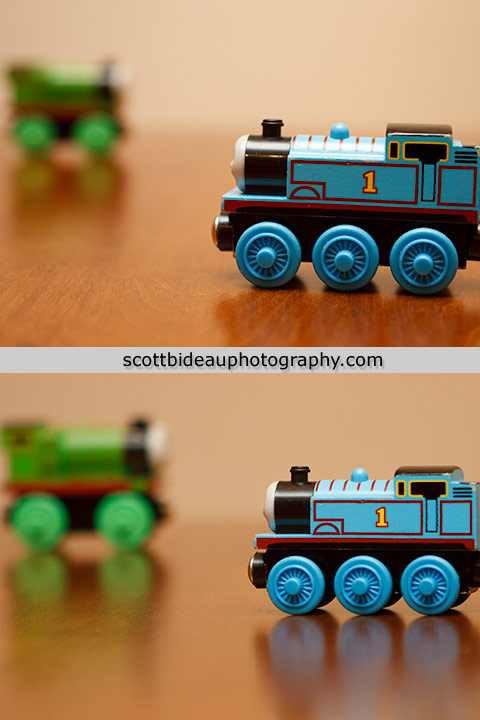
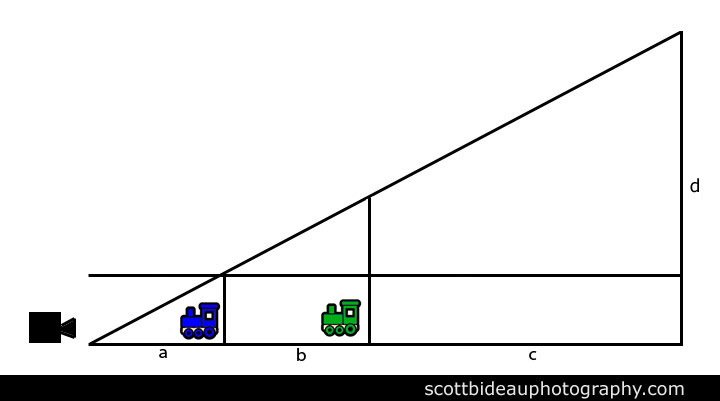


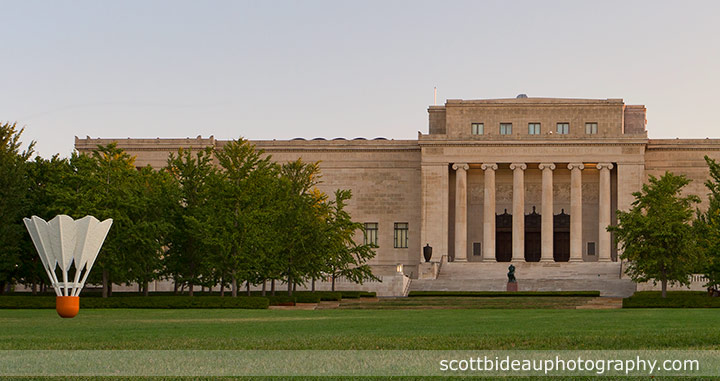
Post comments
12 responses to “Myths About Lens Compression”
Hello Scott,
Thanks for a very instructive post. Taking the last paragraph of your post, I wanted to confirm I understand what you’re saying: If two people are standing at the same exact spot, framing the same scene, one with a Micro Four Thirds 45mm (2x crop factor) and the other with a 90mm full frame, the compression will be the exact same for both? As will everything else (field of view, etc), except for DOF? (I understand the DOF distinction.)
Cheers,
Wesley
The compression will be the same because the two people are standing equal distance from their subject. The framing would be the same if they zoom or crop accordingly.
Thanks for the reply.
“The framing would be the same if they zoom or crop accordingly.”
In my example though, as it’s a 45mm M4/3 and 90mm Full Frame, no zooming or cropping would be necessary to have the same photo/framing right? They would both be capturing the same scene at a 90mm focal length.
Correct. Another way of saying my second sentence is:
The framing would be the same if they use equivalent focal lengths or crop accordingly.
Got it. Thank you again, Scott.
Thanks for the great post and responses to questions – I too was wondering how compression would be impacted by crop factor. Thanks!
Wow, thanks for such a great post.
I’ve just spent the last hour or so looking into “Lens Compression” (or more correctly perspective compression) and have been so confused by all the mis-information out there regarding the phenomenon.
Your examples and and clear explanations have cleared up everything and truly opened my mind! I think every photographer out there should read this article, so we can stop spreading round a complete myth.
If others are interested, here’s a pretty technical but succinct document I found explaining the optics involved in perspective compression.
http://scubageek.com/articles/compression.pdf
Scott, Just came across your article “myths of lens compression”. Excellent diagram. I have been making this argument for some time to my fellow photographers. I continue to tell them to get there butt back ass far as possible when shooting groups with several rows. I lost the argument in my last cheerleader shoot and glory be, there were giants in the front. lol My calculus is way behind me, so this was a simple way to show my point. Thank you sir!!!
Great article and explanation. While this explains that you can achieve the same perspective regardless of focal length, there is still benefit to be had by utilizing quality lenses in a focal length that gives your desired perspective without cropping. Maximum image quality and resolution will be derived from this setup (assuming your wide and telephoto are of similar quality to begin with.
So for those of you deciding which lens to use or buy for pleasing portrait photography, for example, it is still wise to go for a mild telephoto (like 85mm on a full frame) versus using a 35mm, stepping way back ,and then cropping down.
Agreed Ken. Wasn’t trying to imply that anyone should crop like this. Just disproving the myth that the lens compresses the scene. It’s your distance from subject, with a tele lens being a byproduct of that distance.
[…] ^ DOF is reduced, but a fast lens is usually enough for most situations. As far as extension distortion, or perspective distortion, I'll link an article on it. http://www.scottbideauphotography.co…s-compression/ […]
[…] Myths about Lens Compression (Scott Bideau Photography blog post) […]